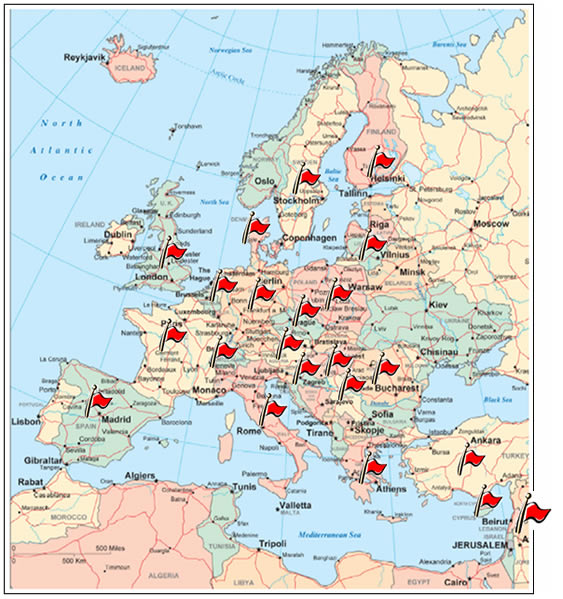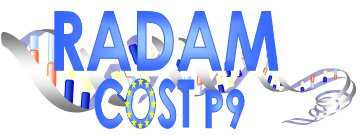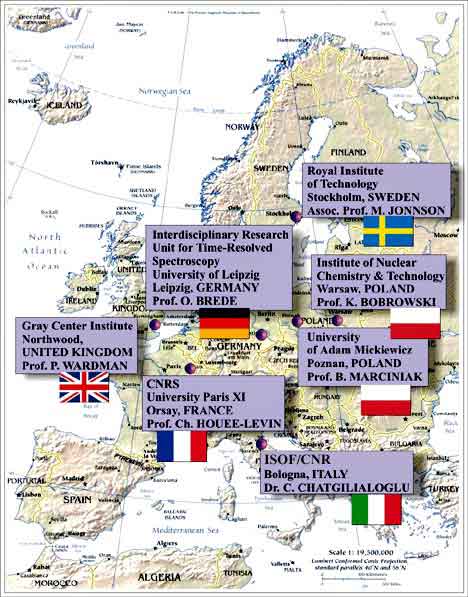INFORMACJE
PAWEŁ B. WIŚNIOWSKI - Notre Dame (USA) - IAEA Fellowship 16.04.1999 (wersja angielska) Research Scholar (1999-2000), (International Atomic Energy Agency Fellowship), Radiation Laboratory, University of Notre Dame, Notre Dame, Indiana, USA. This IAEA fellowship gave excellent advantage of ESR methodology in the period of the four months. The Notre Dame Radiation Laboratory`s unique equipment gives an opportunity to go more deeply into both time-resolved ESR and steady-state ESR theory and phenomena including mathematical approximation of radicals` kinetics and radicals` yields. A new program for Windows 95/98/NT (in cooperation with Dr. R.W. Fessenden and Dr. G. L. Hug) was written. This program includes some very significant procedures and can be used for time-resolved ESR and Pulse Radiolysis problems. Two of these (using a Gaussian weighting function to compensate for line inhomogeneity effects in kinetic traces and the simultaneous solution of the spin and chemical differential equations) are excellent examples of using computational methods in chemistry. The combination of time-resolved ESR and pulse radiolysis at Notre Dame Radiation Laboratory involves complications and opportunities not commonly encountered at other techniques because of using two very difficult methods in the same time. Most of the scientific aspects were in the chemistry of free radicals formed in the radiolytic oxidation of simple amino acids, in particular glycine and its alkyl substituents. Glycine and multiple carboxylic acids are models for organic complexants found in nuclear waste tanks. The mechanism of the radiolytic oxidation of these complexants and their fragments are of concern in the nuclear clean-up effort. The chemistry of the carbon- and nitrogen-centered radicals formed in the radiolysis of glycine is distinct from the sulfur-centered radicals that it is main point of interest in maternal lab in Poland. In the domain of pure chemistry, a new carbon-centered radical was observed. A little-used method of collecting data was used, and this allowed to observe the short-lived radical that had previously escaped the observation in steady-state radiolysis. Both new method for determining the yield of radicals and observation of the new radical will be published. Special thanks dr. G. L. Hug for being excellent supervisor. strona główna autora..
|



